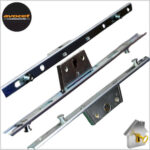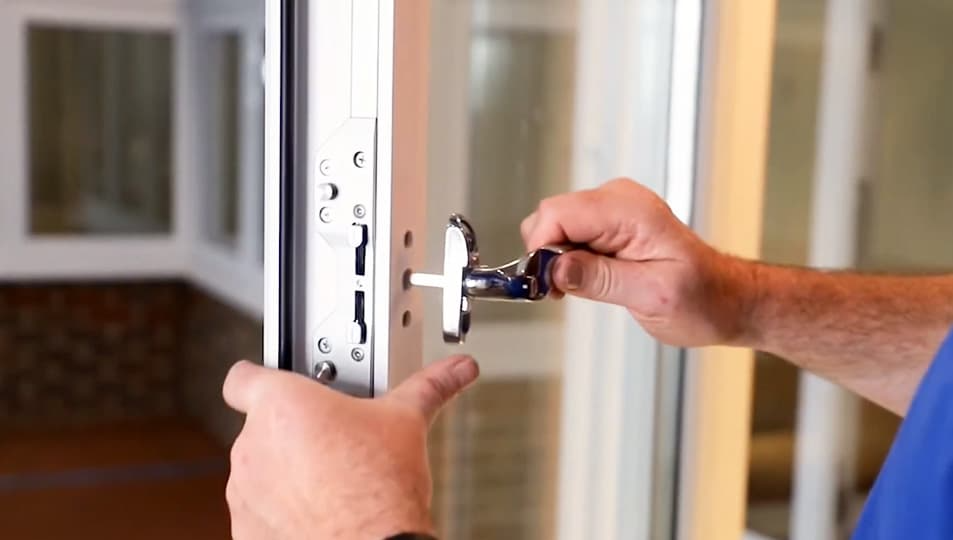Lock Repair: 11 Things You're Forgetting To Do
페이지 정보

본문
 How to Do Your Own Lock Repair
How to Do Your Own Lock RepairYou can either fix your locks yourself, or hire a professional locksmith when they become faulty. Lock repair can be tricky, and the wrong approach could result in further damage.
The first step is to confirm that the problem is not caused by dust or dirt. This is usually solved by applying a graphite-based spray or silicone-based lubricant.
1. Loose Door Knob or Handle
Door knobs and handles may get loose in time, which can result in a jiggly door handle, or a knobs that are difficult to open. Door knobs that are loose aren't just annoying but they can also compromise your building's security, making it crucial to solve the issue quickly. Fortunately, a doorknob that is loose or handle is relatively simple to fix. There are a few different ways to fix this dependent on the lock your door comes with. Some lock systems have visible mounting screws that are easy to access, whereas others use a backplate that obscures the screws holding it together. If your door is the second type, this process could be more complex.
The majority of interior doorknobs come with a small screw known as a setscrew that is located on the inside of the knob that prevents it from sliding over the spindle. This is a part of the latch assembly. If yours is jiggly it could be due to a small screw called a setscrew located on the inside of the knob that prevents it from sliding across spindle. You can utilize an flashlight to locate the set screw, then tighten it using an Allen wrench. After the screw has been tightened then turn the knob to check if it feels solid.
If your knob still feels like it's jiggly, then the set screw isn't positioned properly. Find a small button that matches the spindle, to ensure that the screw is in the correct position. Depress the button with an screwdriver with a flat head, and then slide the knob across the spindle. When you do this the knob should begin to click and show that it is placed correctly on the spindle.
After you've confirmed that the set screw is positioned correctly and tightened it again to secure the knob. This should fix the problem If not then you might have to take the knob off and check the backplate for missing or loose screws. You will need to replace window locks the screws in the event of this before you can reinstall the knob or handle. If you're not sure about this type repair, call an expert who is skilled in damaged lock repair.
2. The key won't turn inside the lock
There are a number of reasons that your key may cease to turn in the lock. One of the most common reasons is that the pins within the cylinder have begun to wear down and no longer have the proper shape to move the wafers, sliders or tumblers that allow the key to open the lock. In this situation the best solution would be to spray the lock with graphite or silicone-based lubricant to coat the pins and help them move again.
If the issue is more serious, and the key has been bent or twisted, you may need to get it straightened by a professional. A professional locksmith will use an instrument specifically designed to straighten the keys, which is designed with an angled tip that fits into the recessed groove of the key's tip. This kind of tool can't be found in hardware stores. However you can buy an entire set of essential tools on the internet or from a locksmith.
Another possibility is that the lock is dirty or damaged. As time passes, dust will accumulate in the window lock replacements lock repair cost (browse around here) cylinder, which can cause the springs and pins to swell up. In this instance, you'll need spray the lock with WD-40, graphite spray, or a silicone-based lubricant to remove it and then reposition the pins back to their original positions.
If the key itself is damaged, it could also be a cause for concern. Keys can wear down over time through frequent use, which could result in the groves wearing down or even become smoother. This could cause the key to not fit into the cylinder. It is essential to check frequently to ensure that the key fits properly.
In colder weather locks can freeze which prevents springs and pins from moving when the key is inserted. This is a problem that can be frustrating, but is usually easily solved by warming the lock with hot water and changing the lubricant. However, if the lock is damaged or frozen beyond repair, it will likely require replacement window lock by an expert.
3. The lock isn't turning
It can be frustrating to find locks that don't turn or open. If it occurs frequently, you may want to contact locksmiths to come check it out and see if they can help. It is not always necessary since some issues can be solved by yourself.
Sometimes, the key won't turn in a lock due to it's damaged. This could happen when you've lost your keys or it is broken in the lock. Instead of trying to get it out of the lock, which could cause the broken piece of the key to be pushed further into the mechanism and cause the problem to become more severe Try using pliers with needles to remove it from the lock. Be careful not to damage the lock by breaking off any piece of the damaged key using the pliers.
There could be a misaligned double glazed window lock repairs, which could cause the door to not to latch properly. If you have an extra lock key, you can try it to verify that the lock is working properly. If you find that the lock is not aligned correctly, tightening the screws around the strike plate can fix the issue and allow the upvc window lock repair to function normally.
A lock may not turn because of dirt or dust. This issue can be resolved by using an lubricant made of silicone or graphite to cover the pins of the lock. This will allow them to move up & down as normal. It's important not to use oil based products like WD-40 for this though since they could cause more obstructions later on.
Lastly, it's worth noting that there are some types of keys that aren't able to fit in all locks. If this is the case, you may require a new key made by a local hardware store.
4. The Cylinder is Rotating
When a cylinder is rotated in a confinement gap, it could cause the formation of hairpin vortices which can lead to significant forces on the cylinder. These forces are proportional the the dimensionless curvature radius and the confinement factor. The tube, head and the main body of the cylinder are made of aluminum alloy.
If you are able to insert your key and turn it, but the lock is still rotating the cylinder, it could be damaged. Rekeying your lock could resolve the issue. You can purchase kits for this purpose online or in a lot of big box stores.

- 이전글Descubre las Emociones de Jokabet Casino 24.11.26
- 다음글시알리스 처방 병원【Pm8.Kr】 24.11.26
댓글목록
등록된 댓글이 없습니다.

